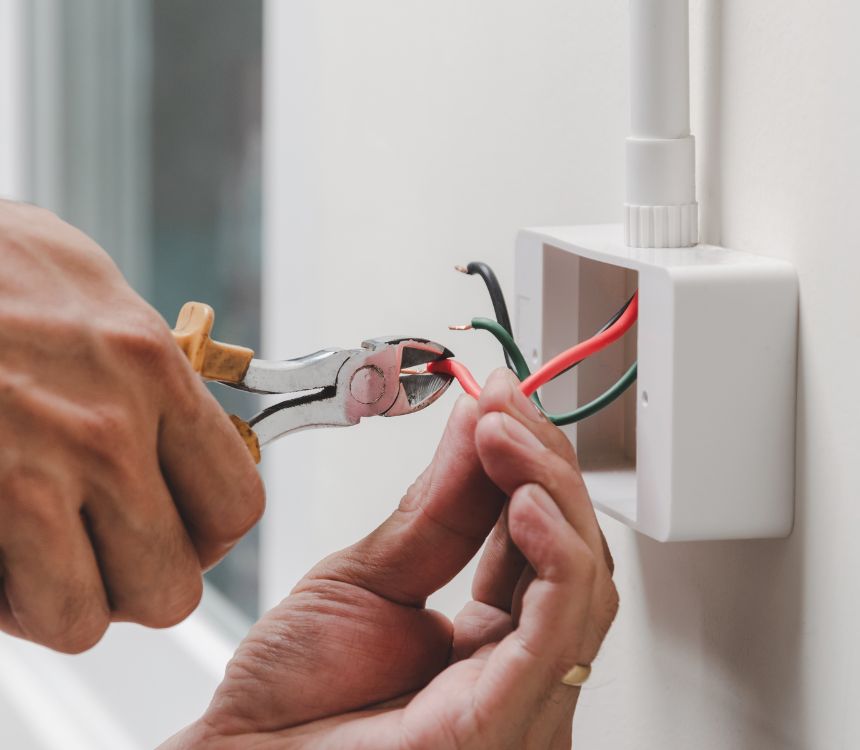If you’re a landlord in the UK, staying on top of legal requirements is essential for ensuring the safety of your tenants and protecting your property investment. One key regulation introduced in 2020 is the mandatory Landlord Electrical Safety Certificate. This article provides a comprehensive overview of this legal requirement, its implications, and how landlords can stay compliant.
What is the Landlord Electrical Safety Certificate?
The Landlord Electrical Safety Certificate, often referred to as an Electrical Installation Condition Report (EICR), is a detailed assessment of the electrical installations within a rental property. This includes wiring, sockets, fuse boxes, and any fixed electrical systems. The aim is to ensure that all electrical components are safe and compliant with current regulations, minimising the risk of electrical fires and accidents.
The Legal Requirement: 2020 Regulation
From 1st July 2020, the UK government introduced new regulations mandating that landlords in England obtain an EICR for all new tenancies. This requirement was further extended to all existing tenancies by 1st April 2021.
Under the Electrical Safety Standards in the Private Rented Sector (England) Regulations 2020, landlords must:
- Ensure Electrical Safety Inspections: Have a qualified electrician carry out an inspection and testing of all electrical installations in their rental properties at least every five years.
- Provide a Valid EICR Report: A valid EICR report must be provided to tenants at the beginning of a tenancy and upon request during the tenancy.
- Keep Records for Future Tenants: The report should be retained for future reference and made available to the next tenant before they move in. If requested by the local authority, landlords must provide the report within seven days.
Get The Landlord Safety Certificate Now
Stay ahead of the legal requirements—get your property’s electrical installations checked and certified.

Why Was This Regulation Introduced?
Electrical safety is crucial in rental properties to prevent hazards such as fires, electric shocks, or accidents. Prior to 2020, there was no consistent regulation across England requiring landlords to inspect and certify the electrical safety of their properties. The introduction of this requirement ensures a safer living environment for tenants while holding landlords accountable for maintaining proper standards.
What Does an EICR Inspection Involve?
A qualified and registered electrician will perform the inspection. They will evaluate the following:
- Condition of Wiring: Checking for damage, deterioration, and overall safety of wiring and cables.
- Consumer Units: Assessing fuse boxes and their compliance with current safety standards.
- Sockets and Switches: Ensuring they are correctly installed and functioning.
- Fixed Electrical Equipment: Testing any fixed equipment like showers, heaters, and other built-in appliances.
The electrician will grade the issues found in the property as follows:
- Code C1: Danger present, requiring immediate action.
- Code C2: Potential danger; urgent remedial work needed.
- Code C3: Improvement recommended; not mandatory but advisable.
For the property to pass, there should be no C1 or C2 issues. If such issues are found, the landlord must complete remedial work and obtain a satisfactory EICR.
How to Obtain a Landlord Electrical Safety Certificate
Obtaining a valid EICR involves hiring a qualified electrician. It’s essential to choose an electrician registered with a recognised trade association like NICEIC or NAPIT. They have the required qualifications and experience to conduct inspections and issue certificates according to legal standards.
Costs Involved
The cost of obtaining an EICR can vary depending on the property’s size and the complexity of the electrical installations. On average, landlords can expect to pay between £100 and £300 for a standard EICR inspection. However, it’s a crucial investment in ensuring tenant safety and avoiding legal penalties.
Penalties for Non-Compliance
Failing to comply with the 2020 regulations can result in significant consequences for landlords:
- Fines up to £30,000: Local authorities have the power to impose hefty fines on landlords who fail to provide a valid EICR or carry out necessary remedial work.
- Tenant Legal Action: Tenants have the right to request an EICR and could pursue legal action if the landlord fails to provide it.
- Difficulty Renting Out the Property: Properties without a valid EICR may struggle to attract tenants or face longer void periods.
How to Stay Compliant as a Landlord
To ensure compliance with the Landlord Electrical Safety Certificate legal requirement 2020, landlords should follow these steps:
- Book Regular Inspections: Schedule an electrical safety inspection at least every five years or sooner if recommended.
- Work with Qualified Professionals: Always hire a registered electrician to conduct inspections and remedial work.
- Keep Detailed Records: Store all EICR reports securely, and make them accessible when needed.
- Communicate with Tenants: Provide tenants with the EICR report at the start of the tenancy and upon their request.
In Closing
The Landlord Electrical Safety Certificate legal requirement 2020 is a crucial regulation aimed at enhancing tenant safety and ensuring that rental properties meet modern electrical standards. As a landlord, staying informed and proactive about these requirements is vital to avoiding penalties and maintaining a safe and compliant rental property.
For landlords who may not be fully familiar with the regulations, seeking professional advice or consulting with a property management expert can help ensure you meet all legal obligations. Prioritising electrical safety is not only a legal duty but also a commitment to providing a secure and comfortable living environment for your tenants.
Further Reading
Gas Safety Certificate Near Me: What You Need to Know
No Gas Safety Certificate Penalty: Understanding the Risks for UK Landlord